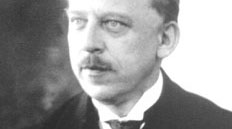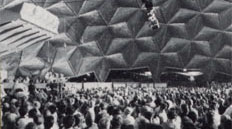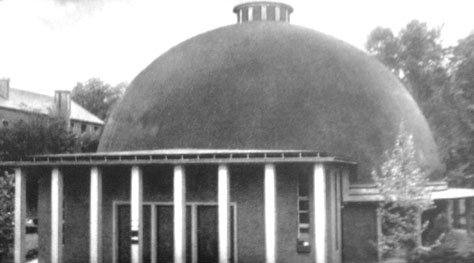For centuries mankind has been searching for the perfect form. Around 600 BC the Pythagoreans tried to split up a sphere into smaller and smaller segments. The so gained Tetrahedron, cube and decahedron forms were further investigated and split up by the Greek Philosopher Plato in his Academy. The platonic geometric forms are still named after him (Tetrahedron, Icosahedron and Octahedron as well as the cube) and were presented as well as described in mathematical formulas by Euclid in his XIII book of elements (300 BC). With the help of these formulas Johannes Kepler was able to describe the orbital radius of the then known six planets by means of a certain combina (1596).
Thus, it is not surprising that the first ideas concerning constructions based on these forms came from a physicist. As early as 1919 the Berlin based Walther Wilhelm Johannes Bauersfeld (*1879; †1959) started the development of a dome structure for the purpose of projections in Jena. At this time, Bauersfeld was chief executive officer for the company Carl Zeiss and due to the initiative of Oskar von Miller began work on a planetarium that was meant to make astrophysical phenomena affordable and perceptible to visitors.
Bauersfeld was able to use the Icosaedron as described by Plato in a way that the ensuing construction could be realized in a 26 m spanning gunned concrete structure. The thus created dome still claims to be the first geodesic dome in the world.
Buckminster “Bucky” Fuller (*1895; †1983 ) continued to develop this technology further in the 1940s and was the first to coin the term “geodesic”.
Fuller started his studies in Harvard in 1912 but got expelled from the university and after different employments in industries he mostly worked as an architect. 1927 he decided to see the remainder of his life as a constant experiment. He wanted to find out what a single person could do to better the world for all mankind.







